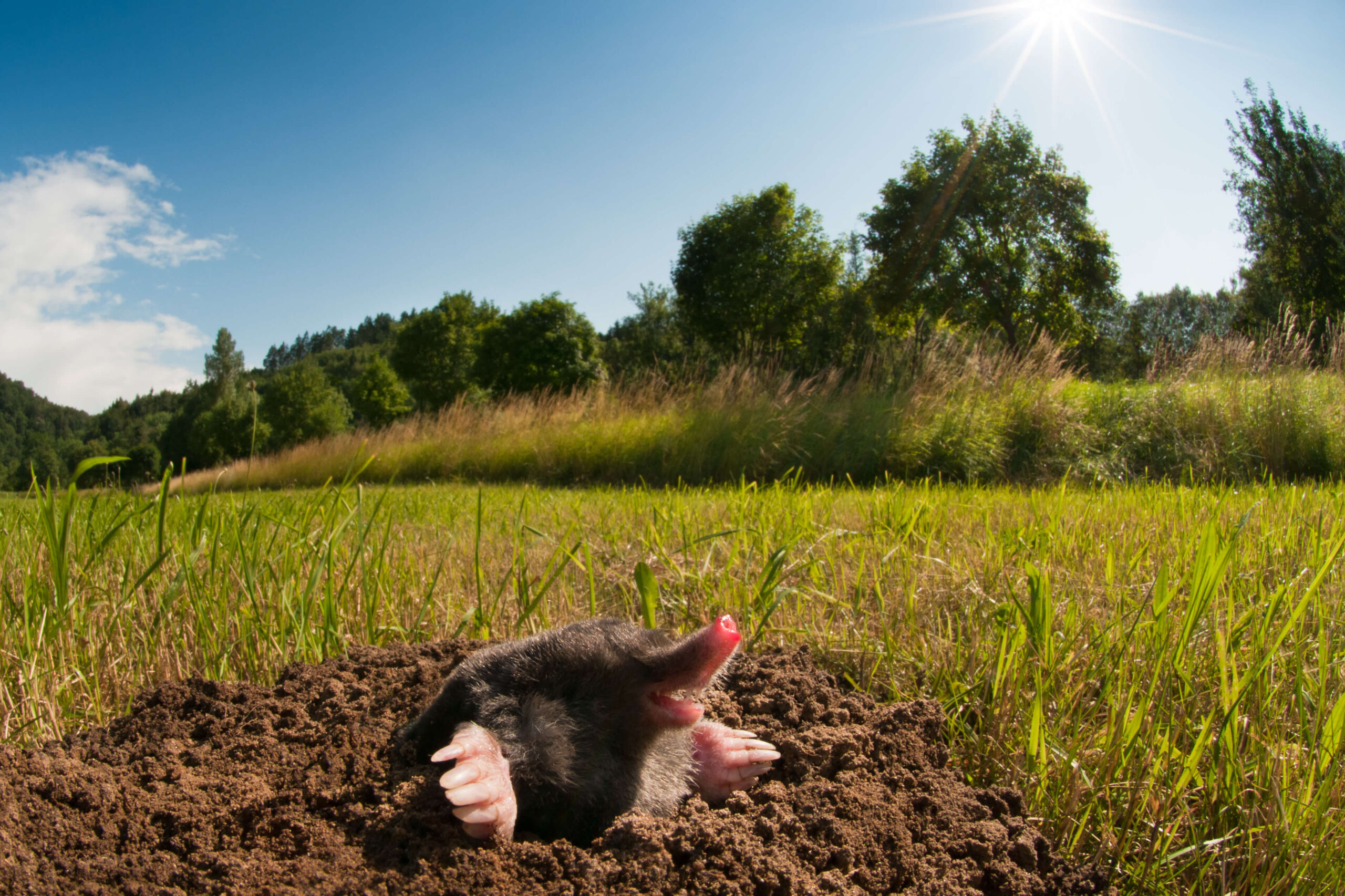
How to Get Rid of Lawn Pests
Chinch Bugs
These tiny bugs measure only about 1/8 of an inch long but don’t let their diminutive size fool you into thinking they are harmless. While it is true that these insects are not dangerous to humans or animals, the same cannot be said for your lawn. Chinch bugs pierce the outer layers of your grass so that they can suck moisture from the inside of the blades. In doing so, they inject a toxin that will make short work of killing your grass. They are especially drawn to St. Augustine grass, a variety that is common in Florida, so be on the lookout for brown, dry patches in your lawn, which could be a sign of chinch bug activity. Treating your lawn regularly for pests can help keep chinch bugs at bay.
Moles Control
These small rodents may look cute and cuddly, but you definitely don’t want them hanging around in your yard. Although they don’t eat the grass or otherwise damage it directly, they do burrow underneath it. This can cause serious damage to the root structure of your lawn, causing it to die off. Keep watch for any raised areas in your lawn, especially those that sink when you apply pressure. This is a surefire sign that there are mole burrows underneath. Moles will dig just about anywhere, and they are active throughout the year, so you’ll need to be vigilant to keep them out of your yard. A rodent control specialist can help you get rid of them, and a few well-placed traps can help stop them from coming back.
Fall Army Worms
Despite their name, these worms aren’t only active during the fall; you’ll also find them active during the spring and summer. Fall army worms lay their eggs on the underside of leaves or blades of grass in order to protect them. Once the eggs hatch, the larvae eat through the grass and leaves quickly as they grow. These worms are voracious eaters, and it won’t take them long to make their way through your entire yard, including your lawn and any bushes or hedges on your property. This is especially true when they congregate in large numbers, so it is crucial that you address the problem as quickly as possible to save your grass and plants. Local pest control experts are highly familiar with these pests and can get rid of them before they cause further damage to your yard.
White Grubs
Grubs look like large, white worms, making them relatively easy to spot on your property. They can grow up to about 2 inches in length, and their bodies form a C shape. They burrow underneath the grass to feed on the root structure, leaving the grass above dry and patchy. If you notice that you are starting to get small dry patches in your lawn, give the blades a gentle tug. If the grass comes up in a large chunk with minimal root structure beneath, there is a very good chance that you are dealing with a grub infestation. Fortunately, a pest control specialist can treat for them quickly and easily so that you can begin the work of restoring your lawn to its former glory.
Say Bye To Pests and Replace the Dead with Fresh Turf
If you have been experiencing pest problems in your yard, causing serious damage to your lawn, you may not be able to get it to grow back as quickly as you would like. Instead of waiting months or even years for your lawn to look great again, it is often a better idea to simply remove the damaged grass and replace it with fresh sod. This way, your grass will be healthy and lush right from the start with a pests-free foundation. Then, you can focus on keeping pests away, rather than scrambling to repair the damage they have already caused.
Here at Duda Sod, we have a wide variety of popular sod types for you to choose from and install, including many that grow well in Florida, like St. Augustine, zoysia, Bahia and more.